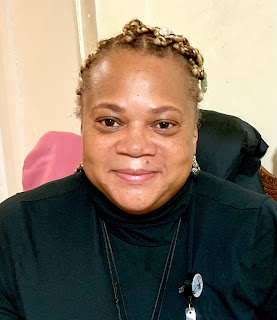Black History Month: 3 critical steps for reducing health disparities
Ruth Caballero, RN, VNSNY
By Chandra Wilson
During Black History Month, in addition to celebrating the remarkable achievements of African Americans throughout history, it is important to think about how race and ethnicity affect health and quality of life.
Health disparities can be particularly dangerous when people are not aware or don’t understand that they’re at risk. Creating awareness, both within the medical community and among individuals whose lives are impacted by disparities, is a critical step toward better health for all.
We hear a lot these days about how social determinants of health—or the economic and social conditions that influence individual or group health status—are responsible for health disparities among different populations. Closing those gaps in care is what the not-for-profit Visiting Nurse Service of New York (VNSNY) has been doing for more than 129 years—ever since founder Lillian Wald first cared for vulnerable New Yorkers on Manhattan’s Lower East Side.
“Black Health and Wellness” is the theme for Black History Month this year, and with this in mind, three VNSNY public health nurses who visit New Yorkers in their homes every day offer the following guidelines for better health. Remember to speak with your doctor or a health professional if you have any questions, concerns or think you might be at risk for serious illness.
Know the Risks
According to the U.S Department of Health and Human Services, African Americans are twice as likely as whites to die from type 2 diabetes, 3.2 times more likely to be diagnosed with end-stage renal disease, and 2.3 times more likely to lose a limb from diabetes related illness.
“Early diagnosis is a major factor in successful treatment of diabetes. Most diabetic patients start out with elevated prediabetes blood sugar levels, and they can delay or even prevent type 2 diabetes by working with their home care provider to lose weight, become active, quit smoking, and eat better,” says Denise Simmonds, RN, who cares for individuals and families in the Bronx.
Collaborate with Families and Caregivers
Each year, approximately 100,000 home care patients in the U.S. report having a second stroke due to uncontrolled blood pressure. Often difficult to detect, hypertension or high blood pressure is known as “silent killer,” with African Americans experiencing twice the mortality rate as their white peers.
Ruth Caballero, RN, who sees patients in their homes in Washington Heights, knows how important it is to keep hypertension in check. Often that means dietary and lifestyle changes that can be difficult to do without help and support.
“Home Care clinicians are also teachers. It’s one of the most important things we do. My goal is to instruct a patient and their family how to live effectively and to support them step-by-step,” Ruth says. “One of the first things I do when someone with hypertension comes into care is take a tour of their kitchen cabinets with them. We all have favorite comfort foods, and usually they can be made in healthier ways without sacrificing good taste.”
Utilize Available Resources
Heath disparities are prevalent during end life care as well with Hospice and Palliative Care services being significantly underutilized among minorities in the U.S. as well. A mere 8 percent of African American Medicare beneficiaries enroll in Hospice, compared with 48 percent of white enrollees. Since 2015, the VNSNY HOPE (Hospice Outreach, Patient and Provider Education) Program has worked with faith-based, community-based organizations and health care providers in the community to debunk myths, close knowledge gaps and provide information and access to care for residents living in Harlem and the Bronx.
“This stark disparity means that millions of Americans are missing out on the many benefits of hospice care at the end of life, which includes getting skilled symptom management while living with their loved ones at home, rather than languishing in the hospital,” says Michelle Drayton, RN, MPH, Director of Hospice and Palliative Care Outreach for VNSNY.
We still have a long way to go to eliminate health disparities in the United States. But as we continue to learn more about the kind of health care support people respond to on the community level, we’re getting a much better picture of how to extend our health care knowledge and resources to all Americans, regardless of race, ethnicity, income, gender, or sexual orientation. One thing that’s clear is that home- and community-based health care organizations like VNSNY will be on the front lines of this growing effort to provide equitable health care for all.
To learn more about VNSNY Home Health Care services visit www.VNSNY.org or call 1-800-675-0391.







Comments
Post a Comment